Berbagai Jenis LED yang Dapat Anda Gunakan di Proyek Berikutnya
Ada banyak jenis LED di pasaran saat ini, dan mungkin sulit untuk mengetahui mana yang tepat untuk proyek Anda berikutnya. Dalam posting blog ini, kita akan membahas berbagai jenis LED dan aplikasinya. Kami juga akan memberikan beberapa tips dalam memilih LED yang tepat untuk kebutuhan Anda.
Apa itu lampu LED?
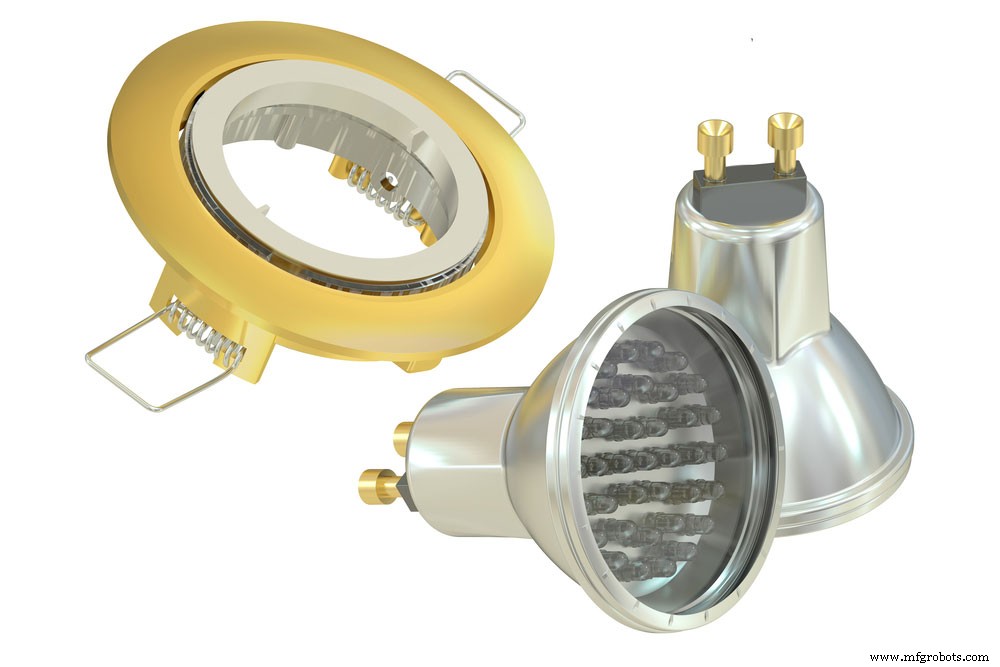
umur panjang Cahaya tersembunyi dengan lampu LED (Light Emitting Diode)
"LED" adalah singkatan dari "light-emitting diode," yang merupakan teknologi semi-konduktor yang mengubah listrik menjadi cahaya. LED adalah jenis dioda tertentu yang memancarkan cahaya tampak ketika arus listrik melewatinya.
Pencahayaan LED baru ada di pasaran selama beberapa dekade. Orang-orang pertama kali menciptakan pencahayaan LED Rudimental pada 1960-an, kira-kira 100 tahun setelah bola lampu pertama muncul. Pada 1970-an, LED menjadi tersedia untuk digunakan dalam perangkat elektronik seperti kalkulator dan jam tangan. Namun baru pada pertengahan 2000-an lampu LED menjadi murah dan umumnya digunakan dalam aplikasi pencahayaan umum.
Dalam Dioda Persimpangan PN, elektron dan lubang bergabung kembali di Sambungan PN untuk melepaskan energi sebagai cahaya (foton) ketika tegangan digunakan dalam arah maju. Warna cahaya yang dipancarkan oleh LED tergantung pada bahan yang digunakan untuk membuat PN Junction.
Warna LED biasanya monokromatik, artinya memiliki satu rona dan bergantung pada celah pita energi dalam semikonduktor.
Simbol Listrik LED
Simbol rangkaian LED mudah dimengerti. Simbol LED mencakup simbol dioda dengan dua panah mengarah ke luar, yang menunjukkan bahwa cahaya memancar dari perangkat.
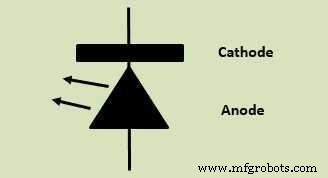
Simbol sirkuit LED
Saat menunjukkan simbol dioda pemancar cahaya hanya sebagai garis besar dan tanpa formulir yang diisi, biasanya itu merupakan petunjuk bahwa Anda tidak boleh menggunakannya dengan asam. Bentuk garis besar juga dapat diterima.
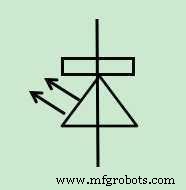
alternatif dioda pemancar cahaya, simbol sirkuit LED
Bagian luar papan sirkuit dan komponen lainnya juga dapat menampilkan simbol LED. Simbol dioda pemancar cahaya kadang-kadang dikelilingi oleh lingkaran. Meskipun tanda ini tidak sepopuler lagi, Anda dapat melihatnya di banyak sirkuit.
Karakteristik LED (Light Emitting Diode)
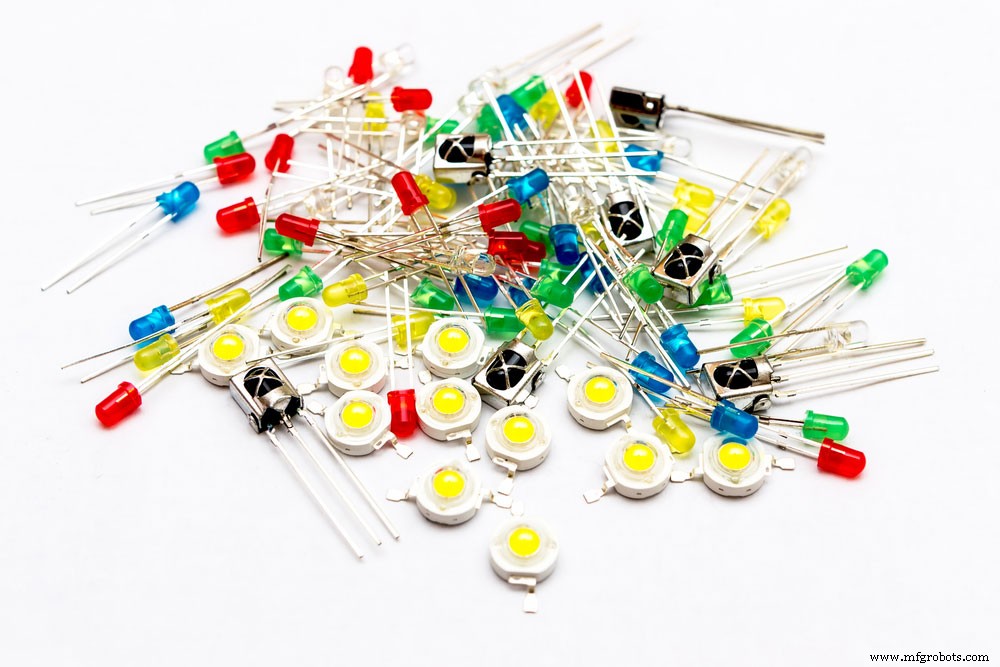
Tumpukan warna-warni 3mmq, 1W LED – dioda pemancar cahaya dan penerima inframerah
Ada beberapa karakteristik LED yang harus Anda ketahui sebelum menghubungkan LED ke rangkaian dan menggunakannya. Karakteristik tersebut adalah tegangan maju (Vf), arus maju (If), dan polaritas LED.
Tegangan Maju LED
Ini adalah istilah lain untuk peringkat tegangan, yaitu berapa banyak daya yang dapat digunakan oleh LED. Selain itu, berapa tegangan LED untuk menghantarkan listrik. Misalnya, semua LED 5mm memiliki nilai arus 20mA, tetapi tegangan majunya berbeda satu sama lain.
LED dengan warna berbeda memiliki peringkat tegangan maksimum yang sedikit berbeda. Peringkat tegangan maksimum untuk LED adalah 3,2 volt, sedangkan peringkat tegangan maksimum untuk LED merah adalah 2,2 volt, LED biru adalah 3,4 volt, dan LED putih adalah 3,6 volt (LED dengan voltase lebih tinggi memerlukan lebih banyak arus listrik).
Maju Arus LED
Catu daya untuk LED adalah baterai DC 12V, yang harus diisi ulang setiap 100-150 jam tergantung pada jenis LED. Karena LED adalah perangkat sensitif dan jumlah arus yang mengalir melaluinya sangat penting, sangat penting untuk memastikan bahwa mereka terhubung dengan benar.
Kecerahan LED juga terletak pada seberapa banyak arus yang melewatinya. Arus yang terlalu besar akan merusak LED, sedangkan arus yang terlalu kecil akan meredupkan LED. Arus maju maksimum untuk LED adalah 20mA.
Namun, warna LED yang berbeda memiliki arus maju maksimum yang berbeda. Misalnya, arus maju maksimum untuk LED merah adalah 30mA, sedangkan arus maju maksimum untuk LED biru adalah 50mA.
Polaritas LED
Polaritas komponen adalah ukuran simetri. Light Emitting Diode, seperti dioda PN Junction, bersifat non-simetris, memungkinkan arus mengalir hanya dalam satu arah.
Panah pada gambar di atas menunjukkan arah aliran arus konvensional, dari positif ke negatif. Kabel yang lebih panjang pada LED selalu merupakan kabel positif (anoda).
Lead yang lebih pendek selalu merupakan lead negatif (katoda). Jika Anda membalikkan polaritas LED, itu tidak akan menyala. Anda dapat merusak LED dengan memasok terlalu banyak arus, jadi penting untuk menggunakan resistor yang dirangkai secara seri dengan LED.
Ketika LED dibias maju (yaitu, ketika menerapkan tegangan ke anoda sehubungan dengan katoda), elektron dapat bergabung kembali dengan lubang di dalam perangkat, melepaskan energi dalam bentuk foton. Efek ini adalah electroluminescence, dan warna cahaya (sesuai dengan energi foton) bergantung pada celah pita semikonduktor.
Bagaimana cara kerja lampu LED?
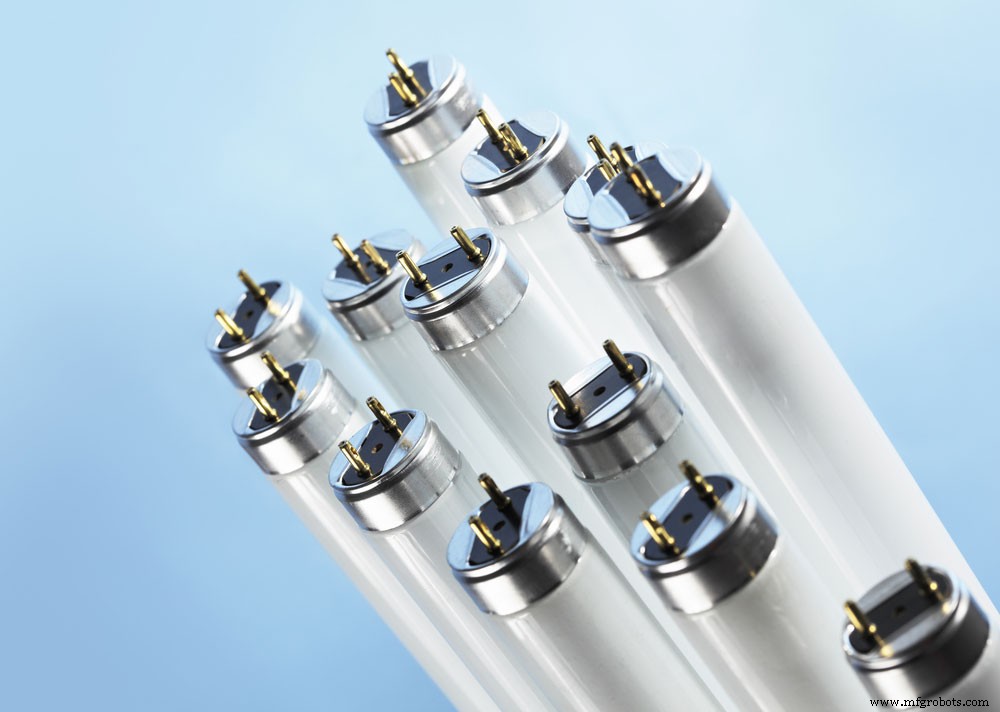
tabung neon, LED normal dengan latar belakang biru
Light-emitting diodes (LED) adalah jenis perangkat semikonduktor yang mengubah energi listrik menjadi cahaya tampak. LED terdiri dari bahan yang disebut semikonduktor, yang merupakan zat yang dapat menghantarkan listrik. Dua jenis bahan yang digunakan untuk membuat semikonduktor adalah logam dan nonlogam. Silikon dan germanium adalah contoh nonlogam yang digunakan orang untuk membuat semikonduktor.
Saat Anda menerapkan energi listrik ke LED, elektron di dalam perangkat bergabung kembali dengan lubang di dalam perangkat, melepaskan energi dalam bentuk foton. Efek ini disebut electroluminescence, dan warna cahaya (sesuai dengan energi foton) tergantung pada celah pita semikonduktor.
Apa saja jenis lampu led yang berbeda?
Dua jenis utama pencahayaan LED adalah LED tradisional dan LED organik (OLED). Berikut adalah daftar jenis LED:
LED Surface Mounted Diode (SMD)
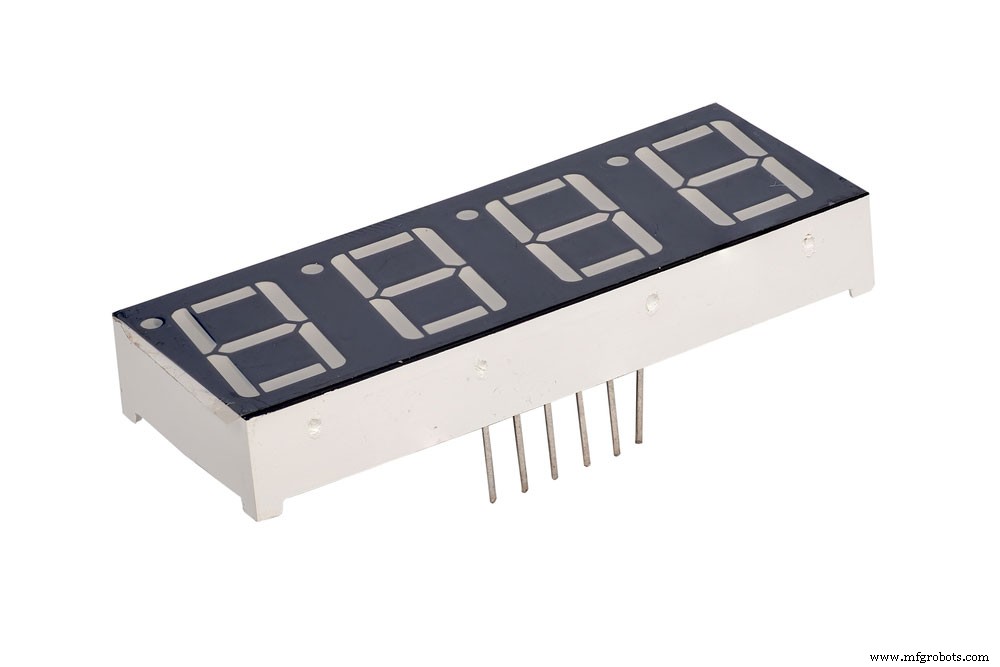
Digit biner 7-segmen yang dipasang di permukaan pada latar belakang putih terisolasi
Ini dipasang ke papan PCB dan disolder di tempatnya, mungkin jenis chip LED yang paling sering tersedia. LED yang dipasang di permukaan lebih terang daripada sepupunya melalui lubang dan memiliki berbagai bentuk. Jenis yang paling umum adalah paket 3528 dan 5050.
3528 LED lebih kecil, menggunakan lebih sedikit arus, dan tidak seterang 5050-an. Mereka sering digunakan untuk lampu latar atau pencahayaan di bawah kabinet di mana ruang sempit, dan pembuangan panas tidak begitu penting.
5050 LED sedikit lebih besar dengan tiga kaki, bukan dua, yang memungkinkan mereka untuk menghilangkan panas lebih baik daripada metode pencahayaan tradisional bohlam standar. Itu membuatnya lebih fleksibel karena dapat tersedia untuk aplikasi berdaya tinggi seperti lampu depan mobil atau perangkat yang dipasang di permukaan dengan keluaran cahaya yang lebih tinggi.
LED melalui lubang
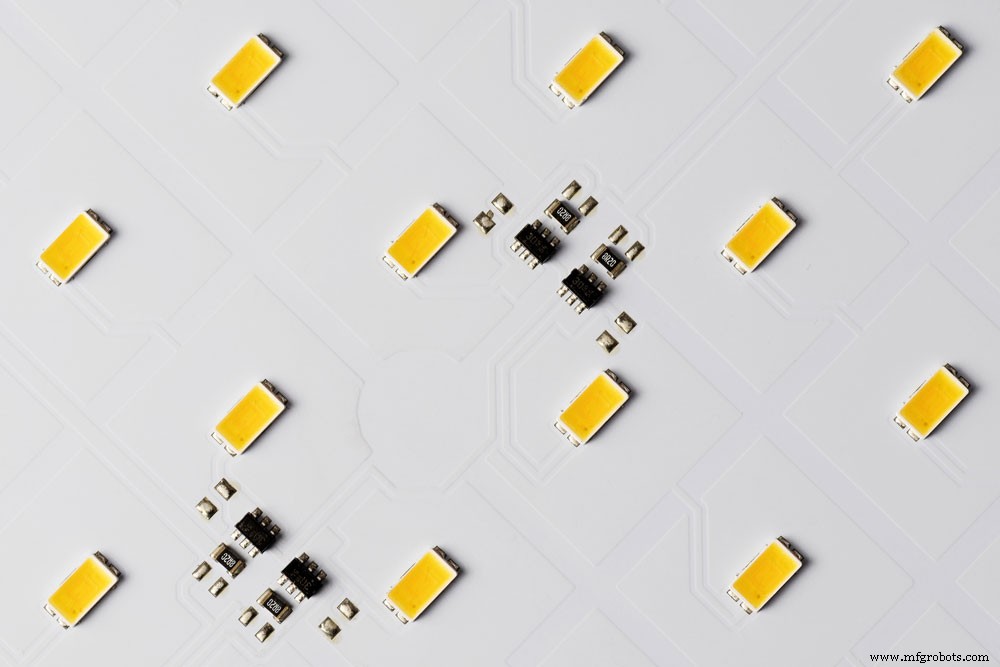
Tampilan atas aluminium putih sirkuit elektronik dengan LED SMD dan microchip.
LED datang dalam berbagai bentuk dan ukuran, dengan yang paling populer adalah 3mm, 5mm, dan 8mm. LED tersedia dalam beberapa warna termasuk Merah, Biru, Kuning, Hijau, dan Putih.
LED Chip on Board (COB)
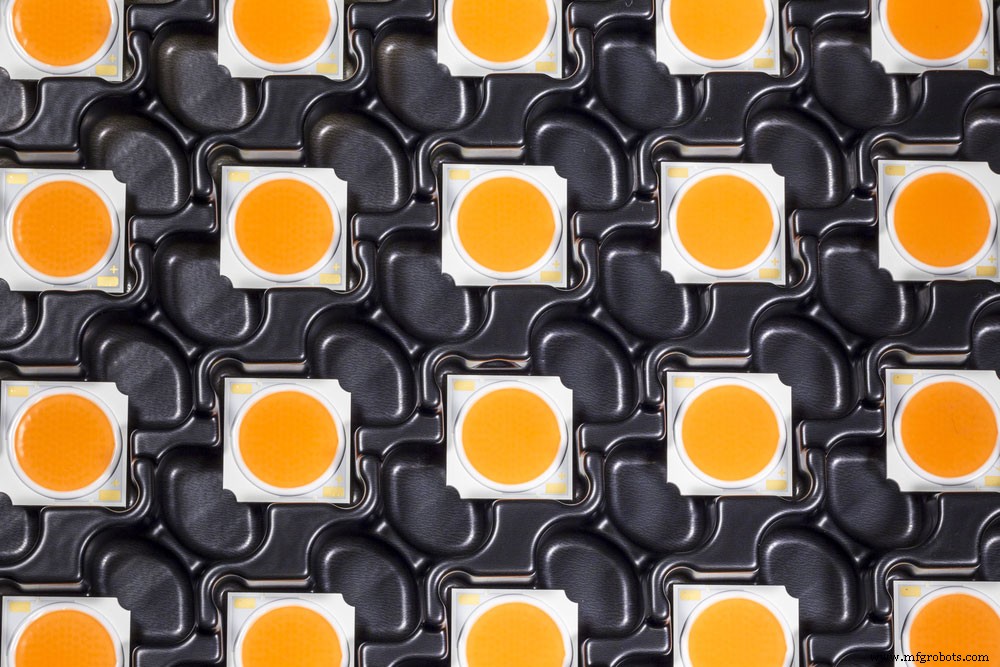
LED COB pada baki wadah hitam
COB adalah jenis chip-on-board yang menghasilkan sinar pengontrol cahaya yang lebih kuat daripada SMD. Selain itu, pilihannya lebih mudah karena orang mendesainnya untuk memancarkan cahaya ke arah tertentu.
LED dua warna dan LED tiga warna
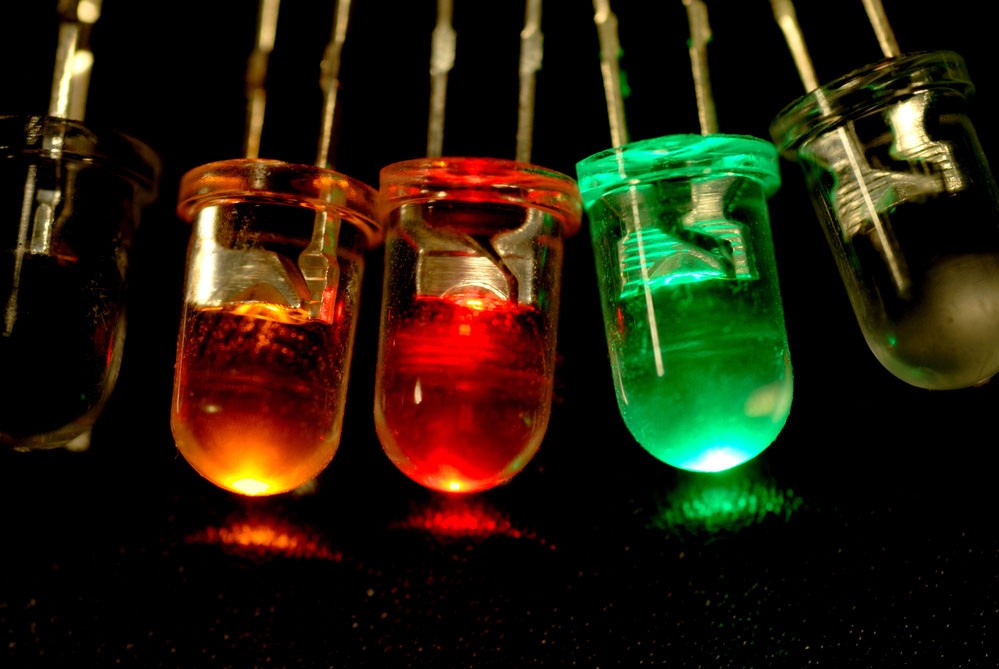
LED Warna
Jenis LED ini memiliki dua atau tiga warna dalam satu LED. LED dua warna memiliki warna merah dan hijau, sedangkan LED tiga warna memiliki warna merah, hijau, dan biru. Kami sering menggunakan ini sebagai indikator status karena mereka dapat memancarkan warna yang berbeda tergantung pada tegangan yang Anda berikan padanya.
LED Daya Tinggi
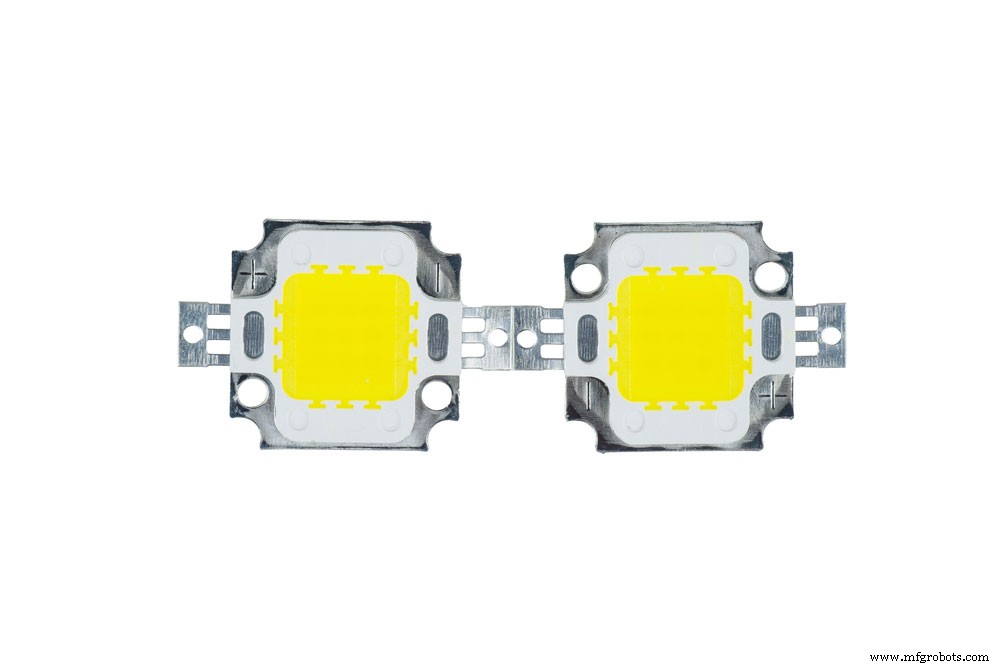
Dua LED pencahayaan putih SMD berdaya tinggi diisolasi pada latar belakang putih.
Biasanya, kami mengukur jumlah daya yang dapat dihamburkan oleh LED dalam Watt. Ini adalah senter yang bagus dengan LED. Anda bahkan dapat menggunakannya untuk membuat lampu sorot dan lampu depan mobil menggunakan susunannya. Karena begitu banyak energi melewati LED, mereka hampir selalu membutuhkan heat sink. Heatsink adalah potongan logam dengan banyak luas permukaan yang dapat Anda gunakan untuk membantu menghilangkan panas dari lampu LED.
LED Dual In-Line Package (DIP)
Chip LED DIP adalah LED asli, karena banyak orang mengingatnya ketika mereka mendengar istilah "lampu LED." Chip DIP LED, meskipun lebih tua dari rekan-rekan mereka yang lebih muda, masih digunakan sampai sekarang dan lebih umum ada di perangkat built-in karena ukurannya yang kecil. Meskipun demikian, mereka tidak terlalu terang dan hanya dapat menghasilkan cahaya dalam jumlah terbatas.
LED RGB (LED Merah – Biru – Hijau)
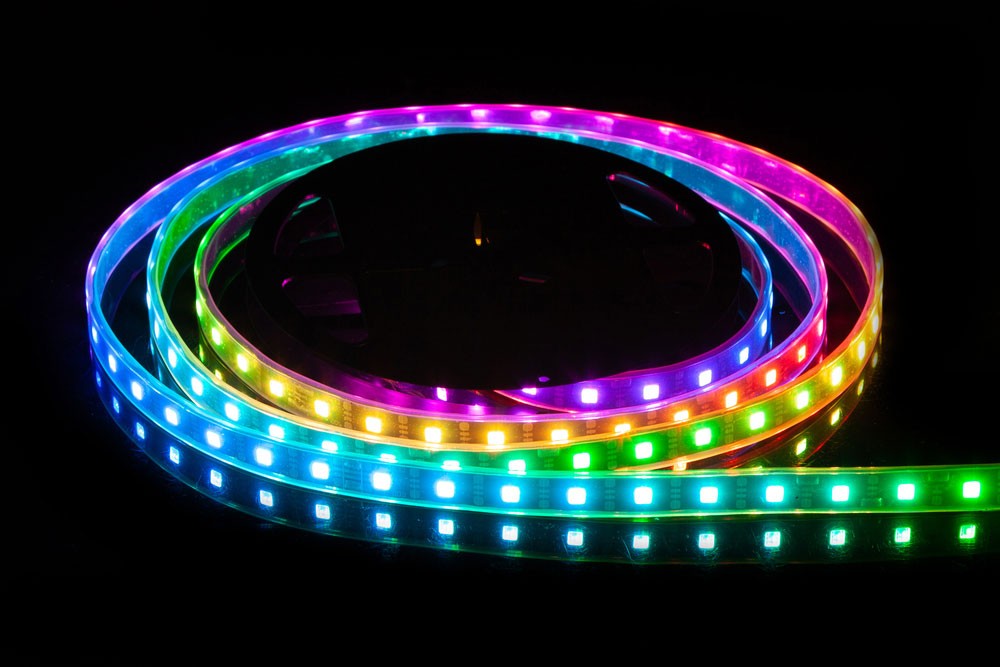
Strip LED RGB pada gulungan dengan latar belakang hitam
LED RGB terdiri dari tiga LED individu yang dihubungkan bersama. Namun bukan berarti mereka hanya bisa menghasilkan tiga warna. Anda dapat memodifikasi intensitas setiap warna untuk menciptakan setiap rona pelangi karena merah, hijau, dan biru adalah warna aditif primer. LED RGB memiliki empat terminal:satu untuk setiap warna, serta pin bersama.
Sakelar Peredup
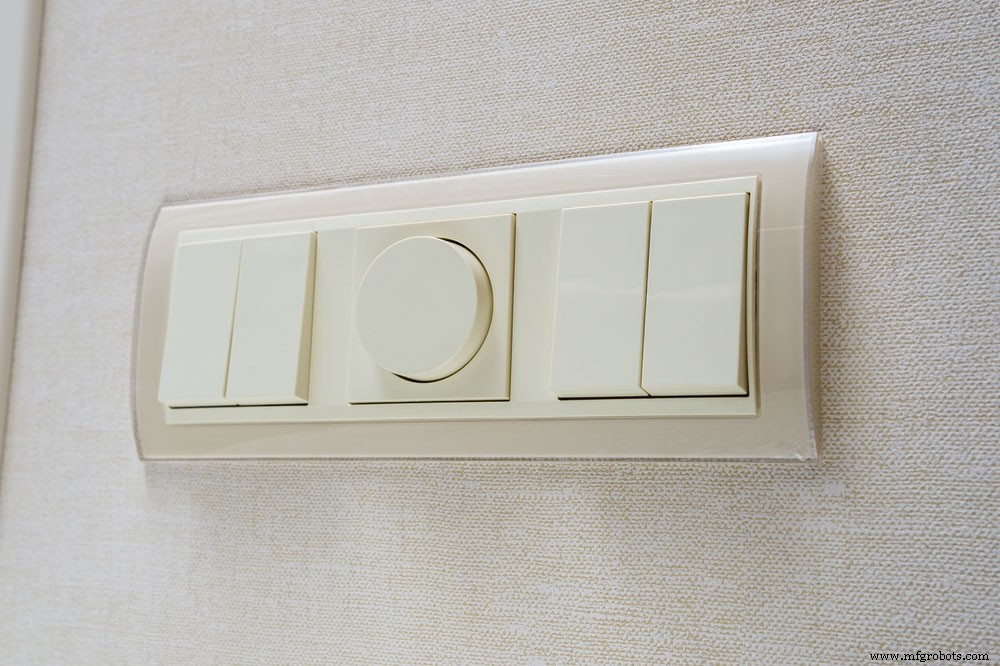
Beralih dengan peredup di koleksi dinding
Seperti jenis lampu lainnya, Anda juga dapat menemukan sakelar peredup untuk lampu LED Anda. Jenis sakelar ini mengontrol jumlah daya yang mengalir ke bohlam.
Dibandingkan dengan sakelar peredup untuk bohlam LED, sakelar peredup pada bohlam pijar standar tidak berfungsi secara efektif.
Akibatnya, Seseorang menyarankan agar bohlam tradisional diganti dengan LED karena menggunakan lebih sedikit listrik daripada bohlam jenis lain.
LED Organik
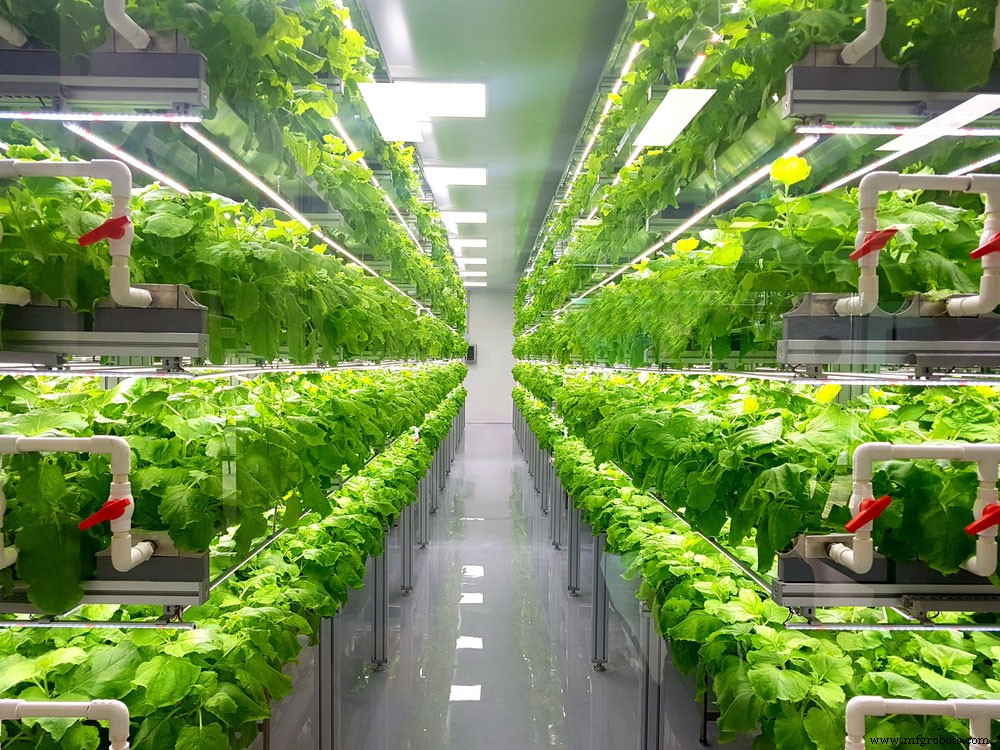
Tanaman di pertanian vertikal tumbuh dengan lampu led yang diproduksi ringan.
Konsep dasar di balik LED organik adalah dioda pemancar cahaya. LED, seperti namanya, mengandung komponen organik. Dioda pemancar cahaya dasar memancarkan cahaya dari sambungan PN spesifik yang menjadi fokus perhatian. LED organik ada dalam lembaran tipis dan menghasilkan cahaya yang menyebar.
Ini paling sering merupakan zat film tipis yang diendapkan pada substrat kaca. Kemudian, ia mentransmisikan impuls listrik melalui komponen semikonduktor ke piksel yang tertanam, yang menyebabkan LED menyala. Teknologi LED terus berkembang dengan kecepatan yang sangat tinggi, baik dari segi efisiensi maupun kompleksitas, dan tidak ada batasan untuk penerapannya di bidang apa pun.
LED Grafena
Pada akhir 2015, saluran populer BBC mengumumkan bahwa pengembangan cahaya akan menggunakan filamen LED berlapis graphene. Ini lebih efisien daripada bohlam biasa dan mengklaim dapat menghemat uang pengguna untuk tagihan energi mereka sekitar 10%. Penggunaan graphene pertama kali dikembangkan oleh seorang ilmuwan yang bekerja di Manchester University. Kompetisi sekarang sedang berlangsung, dan ini membantu dalam menemukan kegunaan inventif untuk bahan yang tahan lama.
LED Kecerahan Maksimum
Istilah LED intensitas tinggi mengacu pada LED anorganik dioda pemancar cahaya (sering disingkat ILED). Di bidang pencahayaan dan dekorasi, orang sudah menggunakan jenis LED ini. Namun, baru pada awal 2010-an LED anorganik menjadi cukup kuat untuk keperluan penerangan umum. LED intensitas tinggi juga digunakan sebagai pengganti sumber cahaya tradisional seperti lampu pijar dan lampu neon. Jenis LED ini memiliki masa pakai yang lama dan hemat energi.
LED Warna
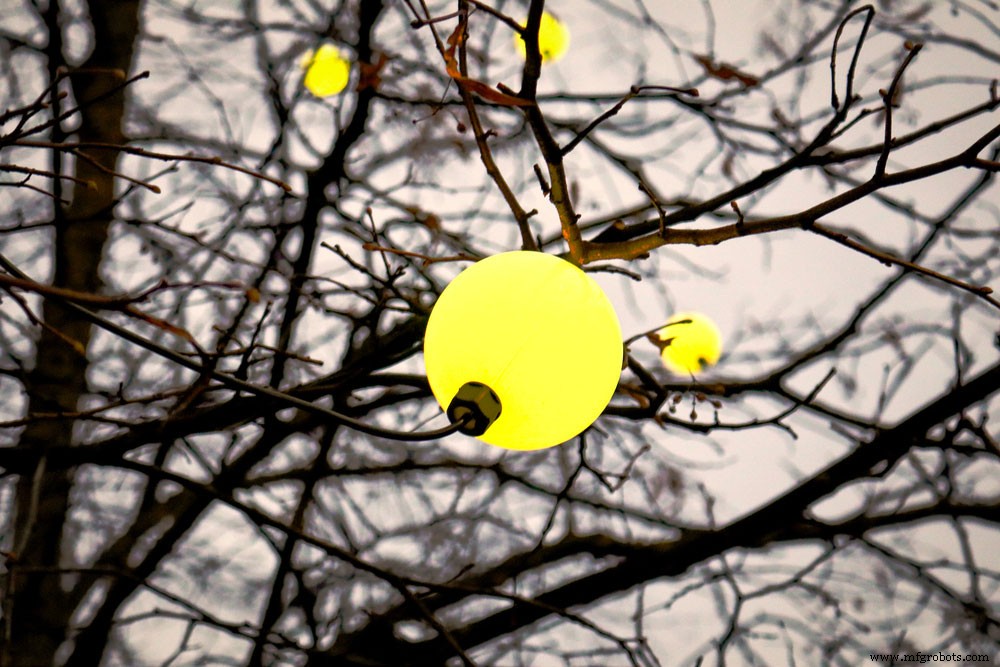
Bola lampu kuning bulat tergantung di cabang pohon di pohon tak berdaun dan latar belakang langit malam sepia
LED warna menarik perhatian semua orang dan tersedia dalam tiga warna:LED putih dingin, LED putih hangat, dan LED siang hari. Bola lampu halogen putih hangat adalah pilihan paling populer untuk penerangan dalam ruangan. Rona biru pucat pada LED siang hari, yang memiliki dasar putih mencolok dengan sedikit warna biru, berfungsi terutama untuk menonjolkan rona sebenarnya.
LED dengan Sirkuit Terpadu
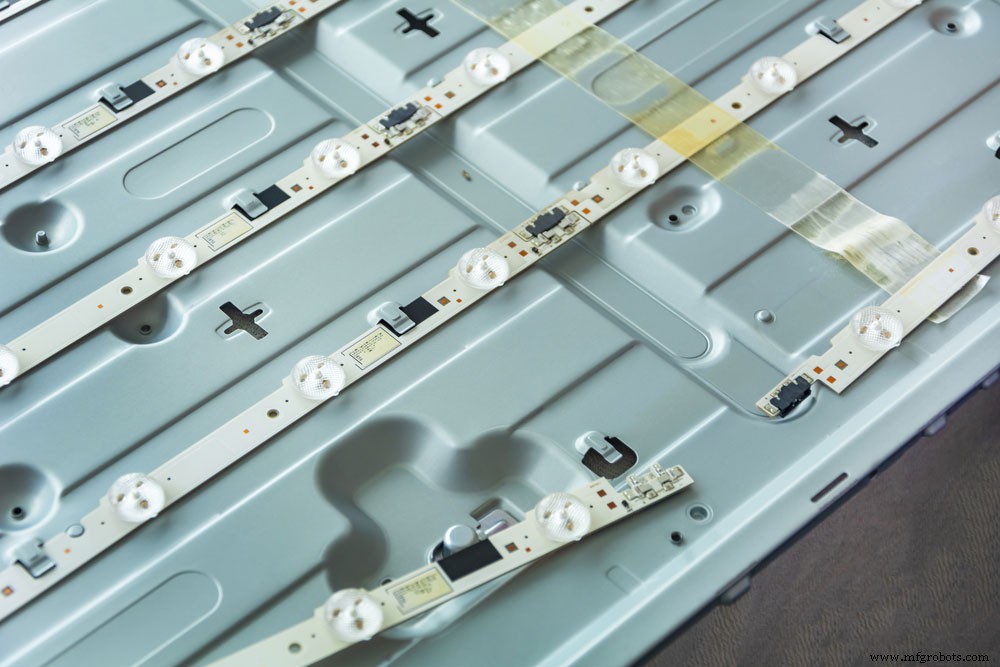
Papan sirkuit LED pada TV LED close-up
-LED yang dapat dialamatkan
Anda juga dapat memprogram LED secara individual dengan panjang gelombang yang berbeda. Masing-masing LED dapat dikontrol menggunakan chipset yang berbeda (WS2812, APA102, dan UCS1903) yang memiliki berbagai tingkat kontrol warna.
-LED bersepeda
LED tidak semua diciptakan sama. Ambil LED bersepeda, misalnya. Ada sirkuit terintegrasi di LED ini yang memungkinkan mereka berkedip tanpa menggunakan sumber daya eksternal.
-Resistor Bawaan
LED dengan resistor pembatas arus kecil juga merupakan LED dengan resistor bawaan. Ada IC kotak hitam kecil di pos untuk membatasi arus pada LED ini. Jadi nyalakan sumber daya Anda dan nyalakan LED dengan resistor bawaan!
LED Khusus
-LED inframerah
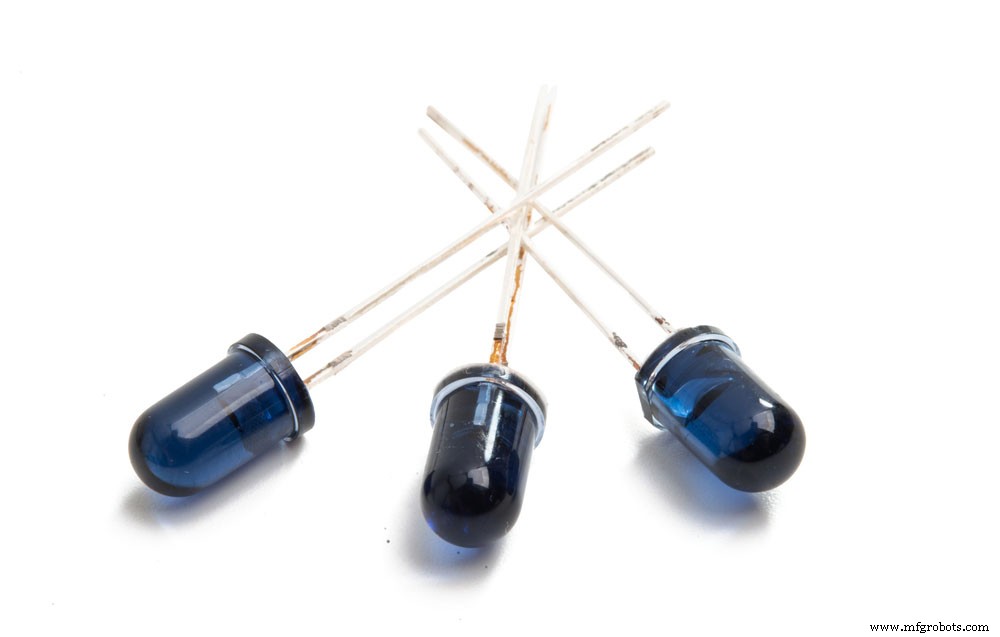
LED inframerah diisolasi pada latar belakang putih.
Ada LED yang mengeluarkan cahaya di luar spektrum yang terlihat. LED inframerah, misalnya, cukup umum. Anda dapat menggunakannya di remote televisi untuk mengirimkan potongan-potongan kecil informasi melalui cahaya tak terlihat! Ini mungkin menyerupai LED biasa, sehingga akan sulit untuk membedakannya.
-LED ultraviolet
Anda juga bisa mendapatkan LED UV pada spektrum low-end. LED ultraviolet akan menyebabkan bahan tertentu berpendar, seperti cahaya hitam! Mereka juga berguna untuk mendisinfeksi permukaan karena banyak kuman sensitif terhadap sinar UV. Anda dapat menggunakannya dalam kartu kredit deteksi palsu, kertas, dan sebagainya.
LED Mini
Tujuan dasar dari LED kecil ini adalah untuk menghias. There may be a chain of little LED lights or separate to use. They come in a variety of hues.
The most essential aspect of mini LED lights is their tiny size, which is why they’re available in automobiles and other places where space efficiency is required.
Alphanumeric LEDs
Alphanumeric LEDs come in seven-segment, starburst, and dot-matrix forms. The seven-segment variety can display all digits as well as a restricted number of letters.
All letters may appear on Starburst displays. In the case of dot-matrix displays, it represents each character by 5 x 7 pixels. The popularity of seven-segment LED displays waned in the 1970s and 1980s as liquid crystal displays with reduced energy requirements and greater display flexibility increased.
Flashing LEDs
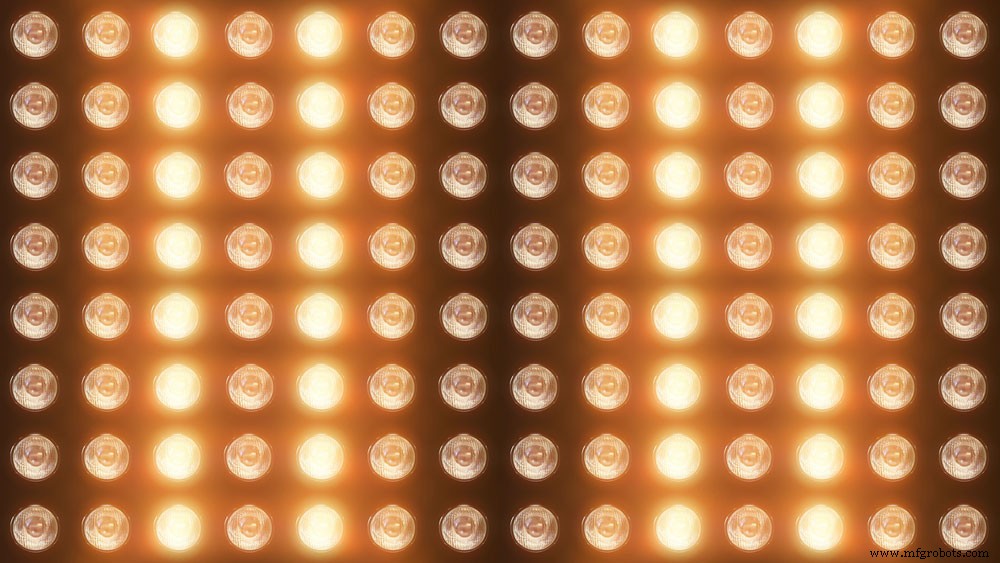
3D rendering of a wall with flashing lights and bright spotlights.
LEDs that are constantly on can be used as attention-seeking signals without the need for an external device. Flashing LEDs look like ordinary LEDs but include a built-in voltage regulator and multivibrator circuit, allowing them to flash with a one-second rhythm.
When viewed in a diffused lens LED, this circuit appears as a tiny black spot. The majority of flashing LEDs give off one color of light, although more advanced devices can flash between colors and even fade through colors in an order using RGB color mixing.
Simple LED Circuit
There are several interesting LED Circuit Project ideas to explore.
Such as LED Pilot Ligh, LED Battery Tester, LED Nightlight, led display, and more.
You may need the materials like led tubes/ led bulbs.
For additional basic LED Circuits, please see here.
The benefits of using LED lights over traditional light bulbs
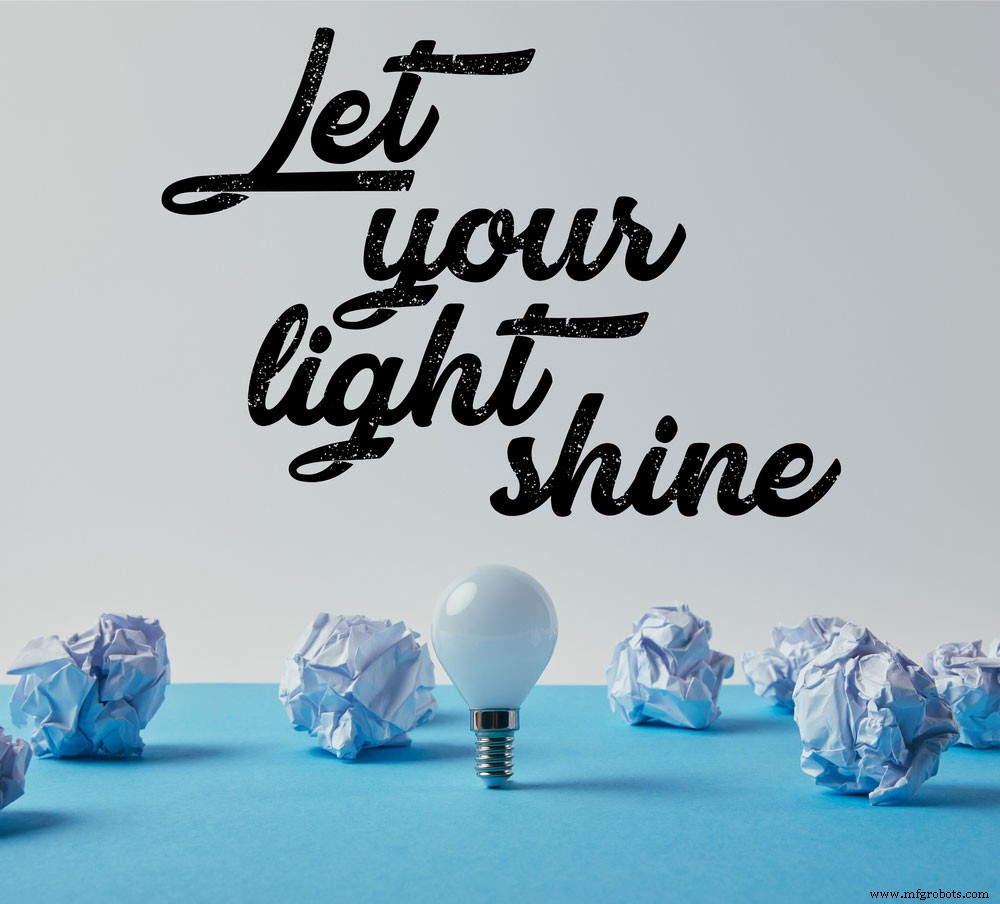
led to light bulbs with crumpled papers on the blue surface
LED lights have a number of advantages for industrial and commercial enterprises that want to lower their power consumption and costs. Here are some of the benefits of LED lights.
Lower power consumption
LEDs are more efficient than incandescents because they produce light in large with relatively little energy.
LEDs convert over 70% of the electricity they consume into light, which is far better than other bulbs that waste a lot of power by converting it to heat. A 6-watt LED bulb can create the same amount of illumination as a 40-watt incandescent.
In addition to saving money on your energy bills, LEDs also last a lot longer than traditional light bulbs. So you could save both your electricity bills and get an energy-saving lifestyle in the domestic lighting.
Long life
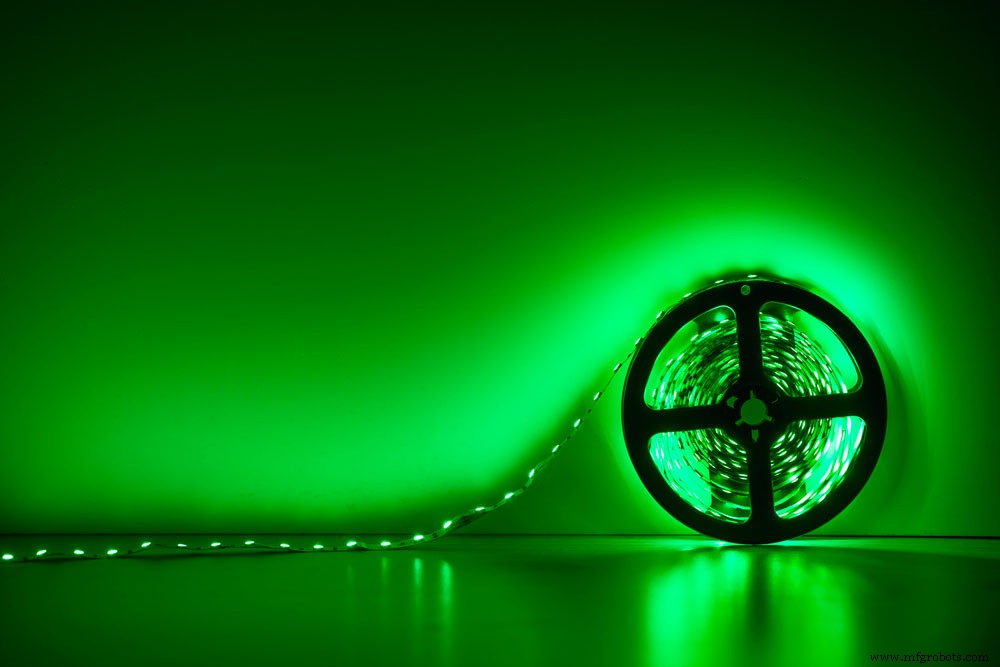
Led strip green light roll with cool light
The life expectancy of an LED light is far greater than that of a regular incandescent bulb. The typical incandescent bulb lasts around 1,000 hours. An average LED light has a lifespan of 50,000 hours. It’s possible for an LED light to endure anywhere from six to 12 years, depending on how you utilize it. This compares extremely favorably against traditional led light bulbs.
A wide color palette
Incandescent bulbs need gels or filters to create different hues and tones of light. LEDs, on the other hand, provide a wider range of colors and color temperatures without the need for gels or filters, which might burn out or fade over time. The color of the emitted light gets changed in LEDs by changing the actual diode ( or material) used.
This is important to consider if you’re using LEDs for specific tasks like growing plants indoors because different colors of light can affect plant growth. For example, blue light helps plants grow taller, while red light helps them produce more flowers.
Eco-friendly
LEDs are eco-friendly in multiple ways. They don’t contain harmful materials like mercury found in CFLs. They also don’t produce UV rays or release toxic chemicals into the air as HIDs do.
In addition, LEDs are recyclable, so once they’ve reached the end of their lifespan, you can recycle them instead of throwing them away.
Design Flexibility
Another advantage of LEDs is that they come in various shapes and sizes. This gives you more design flexibility when choosing led lighting for your home or business.
For example, you can find LED bulbs that look like traditional incandescent bulbs, as well as ones that look like CFLs and HIDs. You can also find LED bulbs with different types of bases, such as E26, E12, and GU24.
High brightness and intensity
LEDs also have high brightness and intensity. This means that they can provide better lighting for your home or business than other types of standard bulbs.
Dimming Capabilities
You can use LEDs at power levels ranging from 5% to 100%, with a success rate of over 90%. Some lighting technologies, such as metal halide, can only be dimmed at a power level of 20% to 50%.
And the dimmer switch may help you whether you want white light or warm white.
Directionality
LEDs, unlike incandescent bulbs, don’t distribute their light in all directions. This helps to minimize energy consumption since no light is lost or trapped inside reflectors and diffusers, which can retain approximately half of the generating light from exiting the bulb. LEDs are great for applications like task lighting and recessed downlights because of their directional light output.
No Heat or UV Emissions
If you’ve ever attempted to change a dull incandescent light bulb after it has fallen out, you know how hot they get when they’re in use. Traditional lighting sources, such as incandescent bulbs, turn more than 90% of the energy they consume into heat while only utilizing 10% for illumination.
LED lights emit very little heat when turned on, making them much safer to the touch.
Additionally, LED bulbs don’t give off ultraviolet (UV) radiation like some types of lighting, such as mercury vapor lamps. This means that they won’t cause fading of fabrics or artwork and can be available in enclosed spaces without fear of UV damage.
light-emitting diodes:How to install LED lights
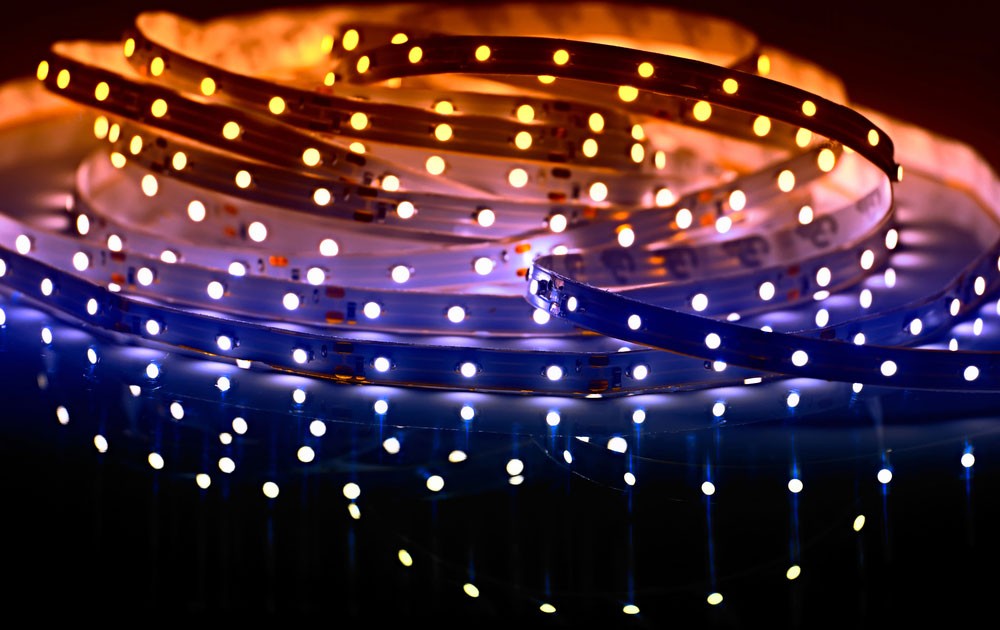
Led strip coil on dark background. Led shining diodes
Installing LED lights may seem like a daunting task, but with a few simple steps, you’ll be on your way to energy-efficient lighting in no time.
First, determine where you want to install the LED lights.
Second, gather the necessary tools and materials.
Third, follow the instructions below.
Installing LED strip lights is a fairly simple process that anyone can do without too much trouble. The first step is to find a suitable location for the lights. You’ll need to consider both the power supply and the layout of the room when choosing a location.
Once you’ve found a good spot, the next step is to gather your tools and materials. You’ll need a drill, screwdriver, wire strippers, and other basic tools. You’ll also need a power supply, LED strip lights, and connectors.
The last step is to follow the instructions for your LED strip lights. This will vary depending on the brand and model of lights you’re using. But in general, you’ll need to connect the power supply to the lights, then use the provided brackets to mount the lights in your chosen location.
If you’re looking for a more permanent solution, you can also solder the LED strip lights directly to the power supply. This will give you a stronger connection, but it’s not necessary for most projects.
The different types of LED lights available on the market
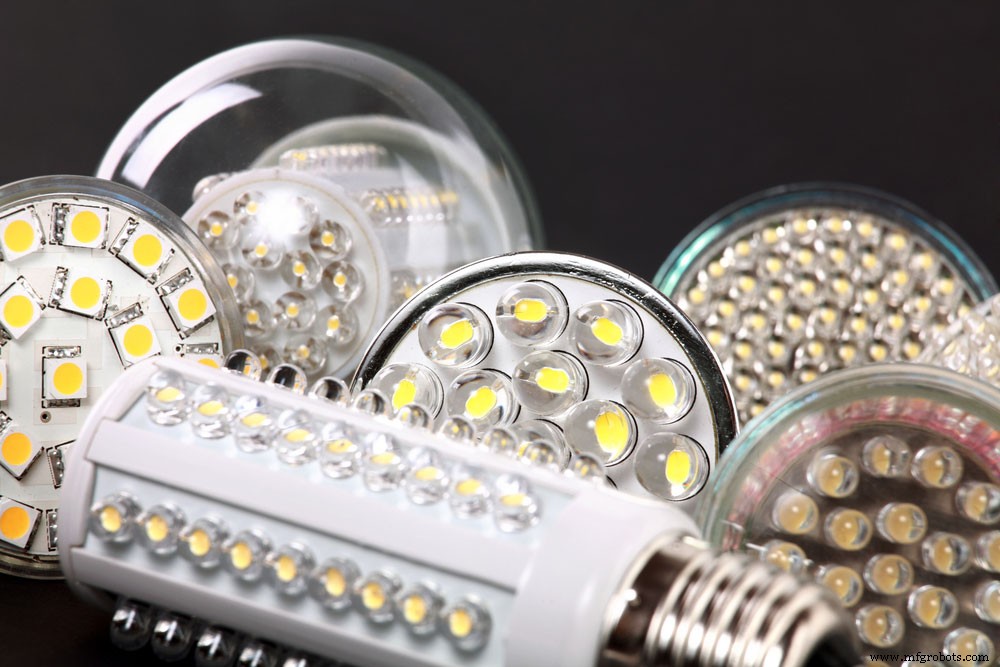
Types of LEDs:Newest LED light bulbs on black background
What is the best type of LED? One of the most common types of LEDs is the standard LED, which is a small, round bulb that can be useful in a variety of applications. Standard LEDs are available in a wide range of colors, including white, blue, green, and red.
Another type of LED is the high-powered LED, which is larger and brighter than a standard LED. High-powered LEDs often appear in outdoor applications, such as street lights and wall sconces.
LED strips are another type of LED that is becoming increasingly popular. LED strips are long; you can use thin strips of LEDs to add accent lighting to a room or provide task lighting under cabinets.
Finally, LED light bulbs are a type of LED that is available to replace traditional incandescent bulbs. LED bulbs are available in various shapes and sizes, and they can be accessible for both indoor and outdoor applications.
How Are LEDs Different than Other Lights?
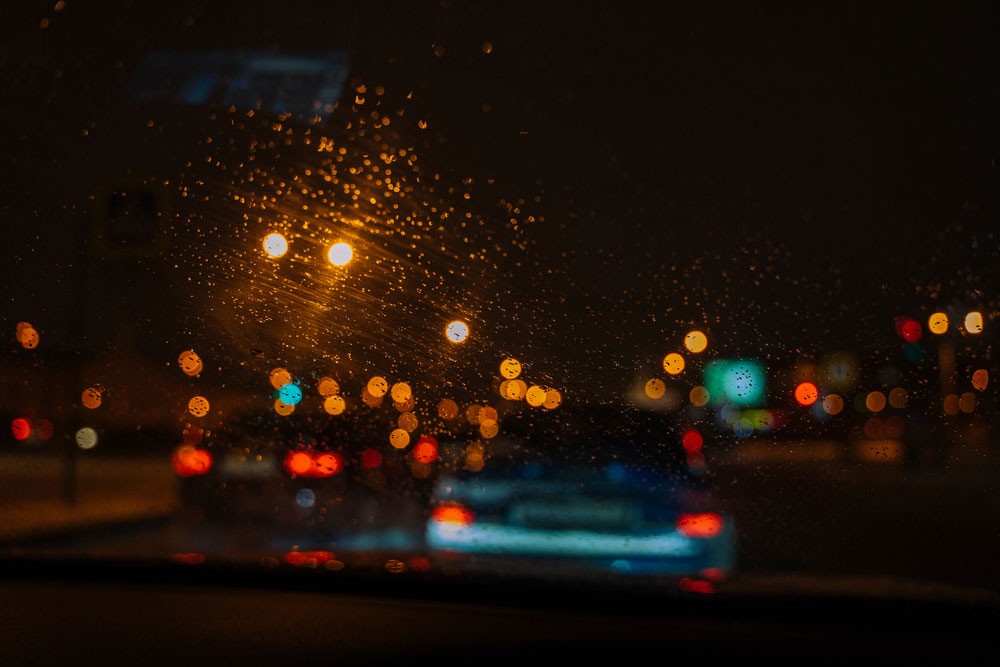
Types of LEDs:street lights
There are a few key ways that LEDs are different than other types of lights. Such as:
Heat
The advantages of LED lighting are numerous, but the main one is that it is more energy-saving than other types of lighting. Incandescent bulbs generate 90% of their energy as heat, while CFLs generate about 80% of their energy as heat. LEDs, on the other hand, generate very little heat.
Light Source
LEDs are about as big as a grain of sea salt, and their numbers are tiny, comparable to a pinch of sea salt. The light source is from a semiconductor comprising two materials joined together.
Directional
The direction emitted by LEDs is what makes these types of lights so different. It emits light in a specific direction, which reduces the need for reflectors and diffusers—these are what trap the light. Other types of lighting, reflecting its light in a certain direction, causes much-wasted light and may never even leave the fixture.
How to choose the right LED light bulbs for your needs.

Types of LEDs:How to choose
Before buying LED lights, there are a few things and variables to consider.
Types of LED:Make a list

Types of LED:The person filling out a to-do list
Count the amount and kind of light fixtures in your house.
How much are you willing and able to spend on LED lights? You may be able to find some good quality, affordable options if you take the time to look around.
Determine the types of light bulbs you need.
Not all rooms in your house will require the same light bulbs. Consider the function of each room when making your decision.
– For example, you may want brighter lights in the kitchen to see while you’re cooking.
– Or, you might prefer softer light in the living room to create a relaxing atmosphere.
Types of LED:Think about the color of light.
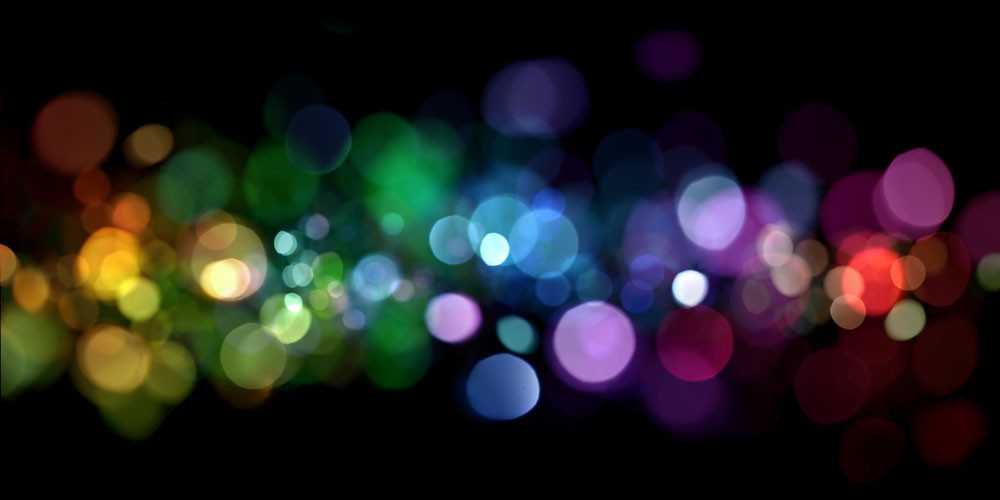
Types of LEDs:the color of light
What color of light do you want to illuminate your space?
White light is the most common, but you can also find LEDs in other colors like yellow, green, and blue.
Some people prefer a certain color of light for specific rooms in their house. For example, blue light might be calming in a bedroom, while white light could help you stay alert in a home or commercial lighting.
You should also consider the color temperature of the light.
-Measure this in Kelvin and it determines how warm or cool the light will appear.
– For example, a bulb with a color temperature of 2700K will emit a warm, yellow light, while one with a color temperature of 6000K will emit a cool, white light.
Brightness or Lumens
The brightness of an LED is important. You need to pick the proper brightness level based on your needs. If you have a little room, you’ll want a low brightness setting, but if you have a big space, you’ll need more light, which means high brightness LEDs ( inorganic LEDs).
The type of light you need to install at a location also influences the cost. The lumens measure the amount of light supplied by an LED in a unit time span. The number of fixtures you’ll need to install is up to the area’s size and how many people will be using it.
Type of LED Light
The first step is to determine the type of LED light you require. LED lights are available in various forms for various applications, with several different types of LED strip lights, tiny lights, halogen bulbs, and fixtures.
If you want to grow plants in your home using LED Grow Lights, you’ll need them. If you’re looking for tiny LED lights for decoration, get colorful mini-LEDs (white LEDs, blue LEDs) and cool light.
Types of LED:Calculate your financial and environmental savings
LEDs, like all other bulbs, come in a variety of shapes and sizes. They are one of the more costly bulb types available today; however recent advancements in LED technology have brought the price down. Many electric utility companies provide incentive programs to help you save money on the upfront cost of LEDs. LED lights are an investment, but they will save you money in the long run.
In addition to saving you money, LEDs are also more environmentally friendly than other bulbs. Besides, they are available in various sizes, shapes, and colors. You can even get mini-LEDs that are small enough.
Types of LED:Do LEDs need a Heat Sink?
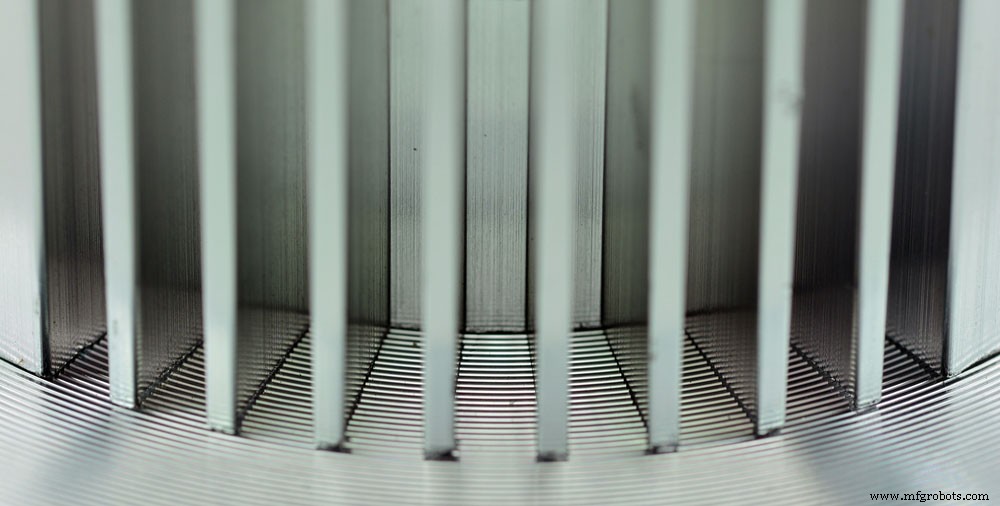
Types of LEDs:Detail of an aluminum heat sink from a led lamp for power dissipation
Ya. LED light strips require heat sinks or channels to remove the heat from them and disburse it back into the ambient air. LED strips will suffer rapid deterioration.
Ringkasan
LEDs come in all shapes and colors, making them a versatile lighting option for your next project. When choosing an LED, it’s important to consider the color, brightness, and viewing angle of the light. There are also different types of LEDs available, depending on your needs. We hope this post has given you a better understanding of the different types of LEDs available and how to choose the right one for your project. Are there any other questions you still have about LEDs? Let us know in the comments below!





























